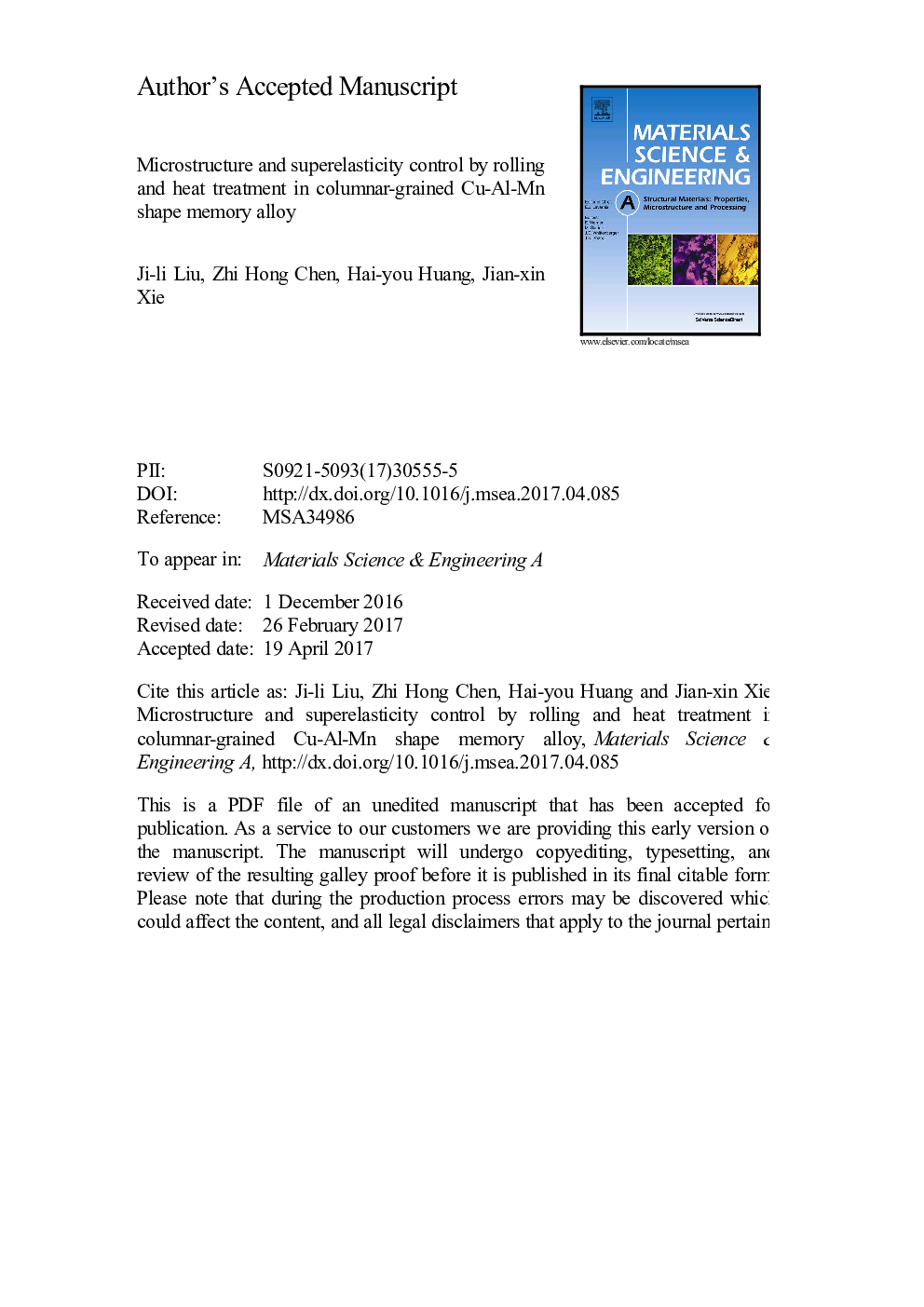| Article ID | Journal | Published Year | Pages | File Type |
|---|---|---|---|---|
| 5456019 | Materials Science and Engineering: A | 2017 | 21 Pages |
Abstract
The effects of rolling and heat treatment on the microstructure and superelasticity of columnar-grained Cu71Al18Mn11 shape memory alloy were investigated in this paper. Two different rolling strategies were adopted: (i) multipass high-temperature rolling (HR); (ii) one-pass HR followed by several-pass cold rolling (HR+nCR). For the first rolling strategy, the results showed that columnar-grained microstructure was reserved after one-pass HR at 800 °C with rolling reduction of above 80%, and recrystallization would occur if more HR processes were applied. The superelastic strain could reach 5.9% in multipass HR sample through microstructure control by annealing at 800 °C. For the second rolling strategy, after the first pass HR with the reduction of 80% and annealing at 550 °C, the alloy could be cold rolled at room temperature with total reduction of 50-70%. The columnar-grained microstructure still existed in the cold-rolled alloy which consisted of two phases (i.e. β1+α). After recrystallization annealing, the HR+nCR alloy tend to form <011> texture along the rolling direction, which was helpful to obtain high superelasticity. Finally, the grain growth heat treatment was used to further improve the superelasticity of the cold-rolled alloy. After 2-3 times abnormal grain growth heat treatment, the grains of the alloy could grow up from several hundred micrometers to more than one centimeter in diameter; they still had strong <011> texture along the rolling direction, which enabled the superelastic strain of as high as about 7%.
Related Topics
Physical Sciences and Engineering
Materials Science
Materials Science (General)
Authors
Ji-li Liu, Zhi Hong Chen, Hai-you Huang, Jian-xin Xie,
